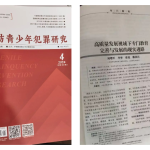Implementing effective A/B testing is crucial for optimizing your website’s conversion rate, but moving beyond basic test setups requires a deep understanding of data-driven methodologies, precise variation design, robust tracking, and advanced statistical analysis. This comprehensive guide delves into concrete, actionable strategies to elevate your A/B testing process from tactical experiments to strategic growth drivers, ensuring every test yields reliable, impactful insights.
Table of Contents
- 1. Selecting and Prioritizing High-Impact Variations for Data-Driven A/B Tests
- 2. Designing Precise and Effective A/B Test Variations
- 3. Implementing Robust Tracking and Data Collection Mechanisms
- 4. Analyzing Test Results with Advanced Statistical Methods
- 5. Applying Multivariate and Sequential Testing for Deeper Insights
- 6. Automating Data-Driven Decision-Making and Iteration Cycles
- 7. Common Mistakes and How to Avoid Them in Data-Driven A/B Testing
- 8. Final Integration: Embedding Data-Driven Testing into Broader Conversion Optimization Strategy
1. Selecting and Prioritizing High-Impact Variations for Data-Driven A/B Tests
a) Leveraging Customer Segmentation and Behavioral Data to Identify Test Variations
Begin by constructing detailed customer segments based on behavioral data such as browsing patterns, purchase history, engagement metrics, and demographic attributes. Use tools like clustering algorithms (e.g., K-Means, hierarchical clustering) on your user data to identify natural groupings that respond differently to various design elements. For example, segment visitors into categories such as "high-intent buyers," "browsers," and "discount seekers."
Within each segment, analyze behavioral signals—such as time on page, click-through rates, and cart abandonment—to pinpoint potential friction points or opportunities for variation. For example, if data shows that a subset of users frequently abandons at the checkout, prioritize testing variations that simplify the checkout process specifically for that segment.
Utilize heatmaps, session recordings, and event tracking to gather qualitative and quantitative insights that inform which variations could yield the highest impact, ensuring your tests are targeted and relevant.
b) Step-by-Step Method for Prioritizing Tests Based on Potential Impact and Feasibility
- Identify Hypotheses: Use insights from segmentation and behavior analysis to generate hypotheses about modifications that could significantly influence conversion.
- Estimate Impact: Assign a potential impact score based on the size of the affected user segment and the expected lift, informed by historical data or industry benchmarks.
- Assess Feasibility: Evaluate the technical complexity, resource requirements, and timeline for implementing each variation.
- Calculate Impact/Feasibility Ratio: Prioritize tests with the highest ratio, indicating maximum potential gain with minimal effort.
- Use a Scoring Matrix: Create a matrix to visualize and rank variations, balancing impact versus feasibility, to select top candidates for testing.
This structured approach prevents chasing low-impact, high-effort ideas and ensures focus on tests that can deliver measurable, scalable improvements.
c) Case Study: Applying Data-Driven Prioritization in E-commerce
In a mid-sized online fashion retailer, segmentation revealed a high-value group of "returning mobile shoppers" who abandoned carts at a high rate. By analyzing behavioral data, the team hypothesized that simplifying the mobile checkout process could boost conversions.
Using impact estimation, they projected that streamlining checkout for this segment could yield a 15% lift, with implementation complexity rated as low to medium. They prioritized this test over broader, less targeted experiments.
Post-test analysis confirmed a 12% increase in conversion rate for this segment, validating the impact estimation method and demonstrating the power of data-driven prioritization.
2. Designing Precise and Effective A/B Test Variations
a) Techniques for Creating Statistically Valid Variations
Design variations with clear, isolated changes that target a single element or concept—such as a new headline, button color, or layout adjustment. Use incremental modifications rather than wholesale redesigns to reduce confounding variables and improve measurement clarity.
Employ A/B/n testing frameworks to test multiple variations simultaneously. For instance, create three headline options and test them concurrently to determine the most effective messaging.
Ensure variations are statistically valid by maintaining consistent user experience aside from the tested element, avoiding overlapping changes that could obscure the true driver of performance.
b) Avoiding Common Pitfalls in Variation Design
- Confounding Variables: Change only one element at a time or use factorial design to isolate effects.
- Overcomplication: Avoid testing too many elements simultaneously unless using multivariate testing; focus on high-impact areas.
- Design Consistency: Ensure variations are visually consistent to prevent user confusion that can bias results.
- Sample Size Consideration: Design variations knowing the required sample size for statistical significance (see section 4).
"Simple, well-isolated variations outperform complex, multi-element tests in terms of clarity and reliability."
c) Practical Example: Designing Variations for a Landing Page
Suppose you want to optimize a landing page’s primary CTA. Variations could include:
- Button Color: Test different hues such as green vs. orange.
- CTA Text: Use "Get Started" vs. "Claim Your Free Trial."
- Placement: Move the CTA above vs. below the fold.
- Supporting Copy: Short vs. detailed benefits list.
Design each variation as a controlled experiment, ensuring only one change per test unless deploying a multivariate approach, and plan your sample size based on expected lift and baseline conversion rates.
3. Implementing Robust Tracking and Data Collection Mechanisms
a) Setting Up Accurate Event Tracking and Data Layers
Implement data layers using JavaScript objects that capture all relevant user interactions—clicks, form submissions, scroll depth, time on page. For example, define a data layer like:
window.dataLayer = window.dataLayer || [];
dataLayer.push({
event: 'cta_click',
elementId: 'signup_button',
page: 'landing'
});Use tag managers like Google Tag Manager to listen for these data layer events, ensuring seamless, scalable tracking across all variations.
b) Ensuring Data Integrity: Handling Sampling Bias, Outliers, and Data Lag
- Sampling Bias: Use random assignment at the user level via cookies or local storage, not server-side or IP-based methods that can skew results.
- Outliers: Apply statistical filters—such as winsorizing or trimming—to remove anomalous data points that can distort significance calculations.
- Data Lag: Wait for conversion windows to close before analyzing, especially for long sales cycles, and track time-to-conversion metrics.
c) Technical Guide: Integrating Google Optimize, Optimizely, or Custom Scripts
Leverage platforms like Google Optimize or Optimizely to create and manage variations efficiently. These tools provide built-in analytics, targeting, and reporting features. For custom integrations:
- Inject variation-specific CSS or HTML snippets dynamically based on URL parameters or cookies.
- Implement event tracking via JavaScript listeners that push to your data layer.
- Ensure server-side rendering aligns with client-side variation management to prevent flickering or inconsistent experiences.
4. Analyzing Test Results with Advanced Statistical Methods
a) Calculating and Interpreting Statistical Significance and Confidence Intervals
Use the binomial test or chi-squared test for binary outcomes like conversions. Calculate the p-value to determine if the observed lift is statistically significant at your chosen alpha level (commonly 0.05). For example, if you test 1,000 visitors per variation, and variation A converts 10%, while B converts 11%, compute the z-test for proportions:
z = (p1 - p2) / sqrt(p*(1-p)*(1/n1 + 1/n2))
Interpret confidence intervals to understand the range within which the true lift likely falls, providing context beyond mere significance.
b) Bayesian vs. Frequentist Approaches for More Accurate Insights
- Frequentist Methods: Rely on p-values and null hypothesis testing; useful for quick decisions but prone to misinterpretation.
- Bayesian Methods: Calculate the probability that a variation is better given the data, incorporating prior beliefs. Use tools like Bayesian A/B testing frameworks to obtain more nuanced insights, especially with small sample sizes or multiple metrics.
c) Practical Example: Analyzing a Split Test with Multiple Variations and Metrics
Suppose you're testing three landing page variants—A, B, and C—across two primary metrics: conversion rate and average order value. Use multivariate analysis techniques such as ANOVA or multivariate Bayesian models to assess interactions and combined effects. Visualize results with confidence ellipses for each variation to understand overlap and significance.
5. Applying Multivariate and Sequential Testing for Deeper Insights
a) Designing and Running Multivariate Tests
Utilize factorial design to test multiple elements simultaneously—e.g., headline, image, CTA color—creating a matrix of combinations. For example, a 2x2 factorial design with two headlines and two button colors yields four variations. Use tools like Optimizely X or VWO that support multivariate testing with built-in statistical analysis.
Ensure your sample size calculations account for the increased number of variations, as the required sample size grows exponentially with the number of tested elements.
b) Step-by-Step Guide to Sequential Testing and Avoiding False Positives
- Implement Sequential Analysis: Use statistical methods like alpha-spending functions or Bayesian sequential


.png)


















